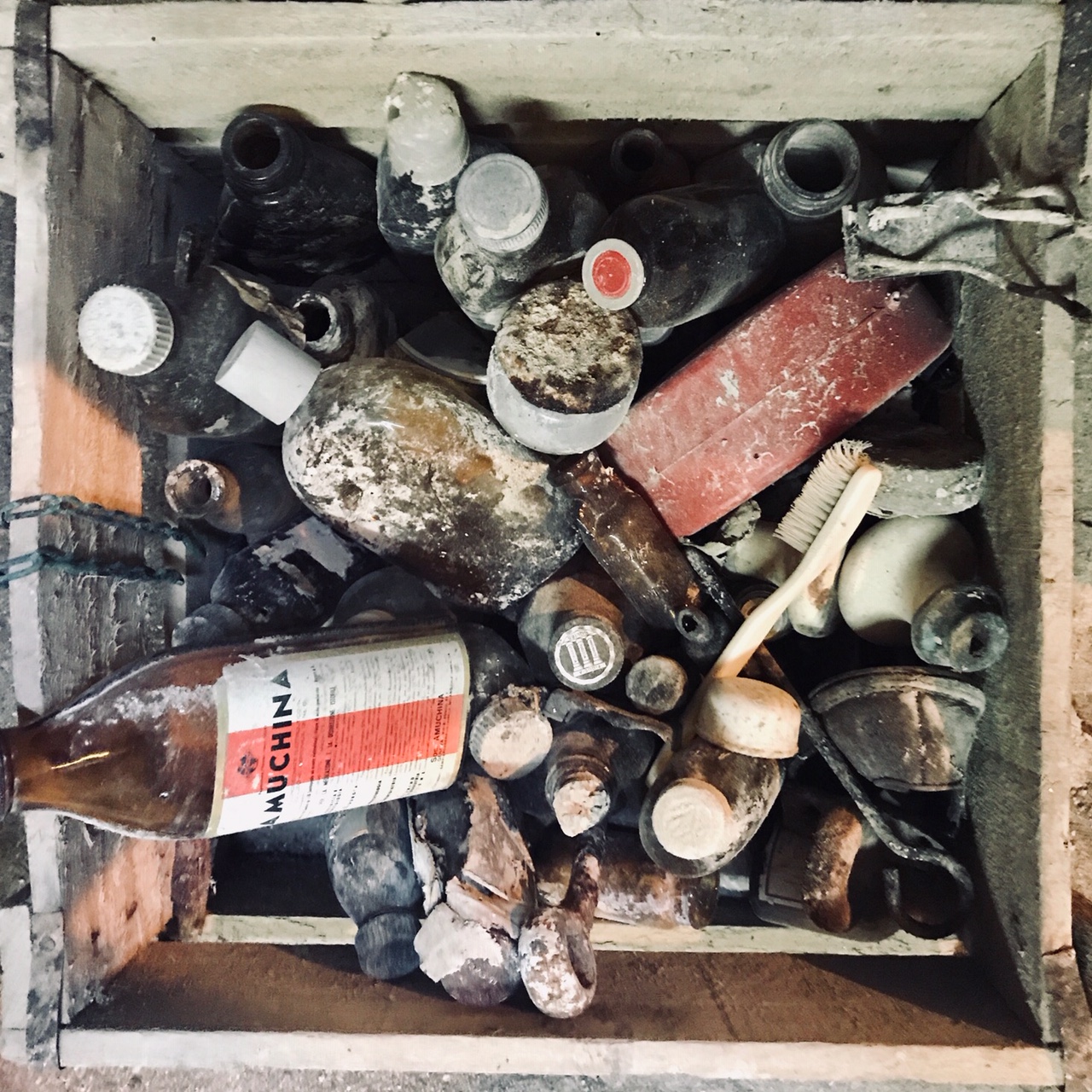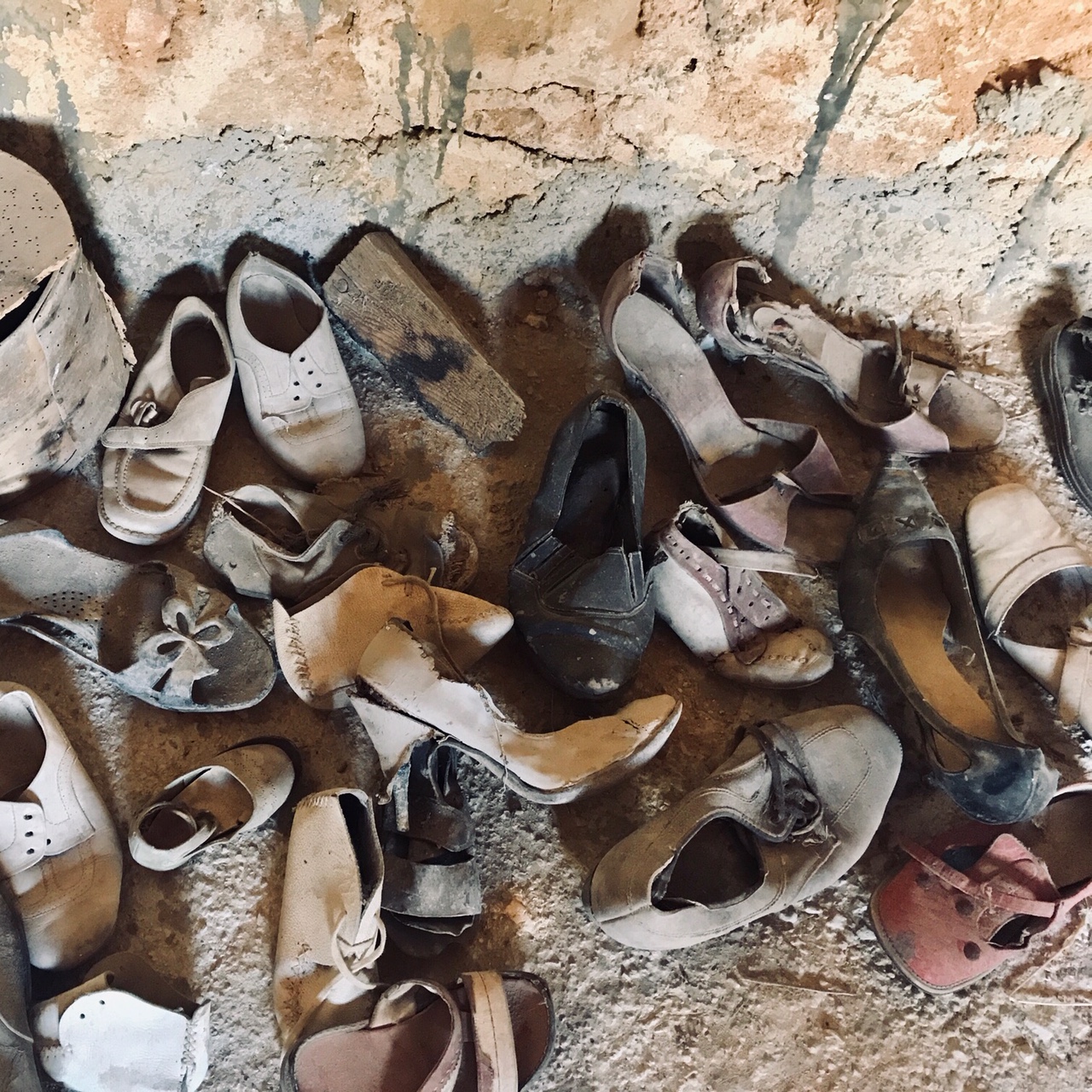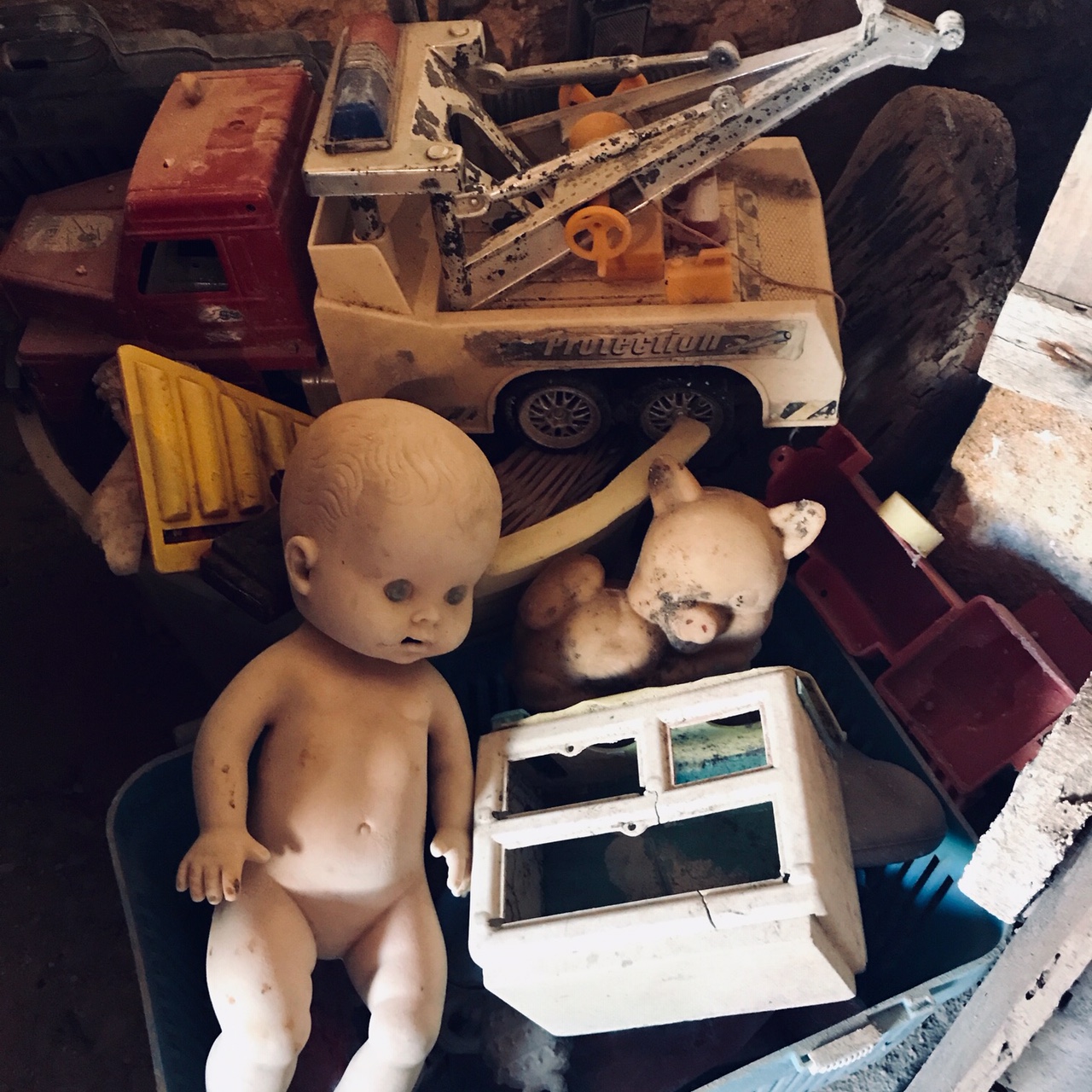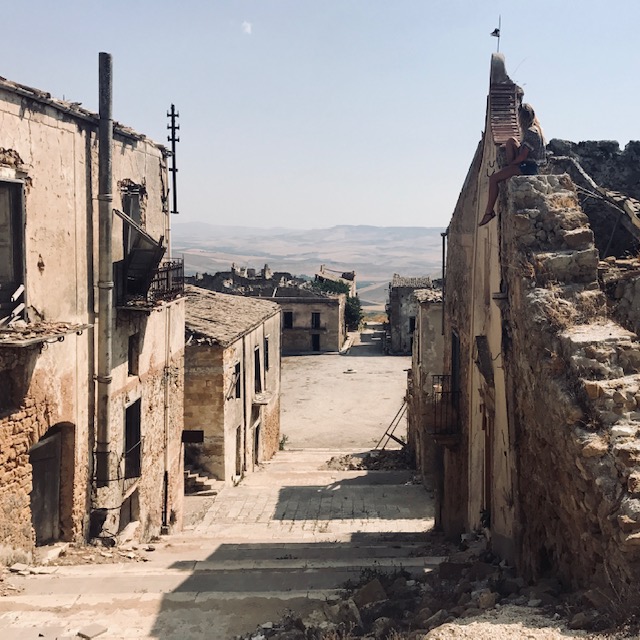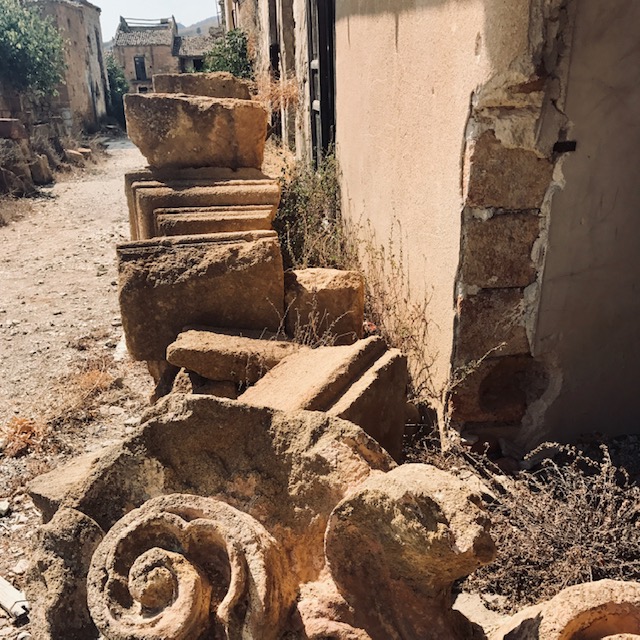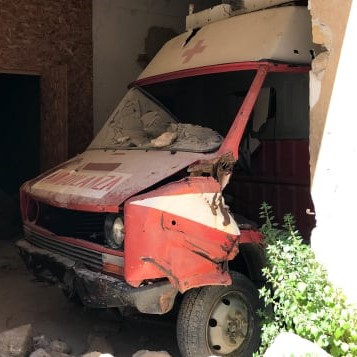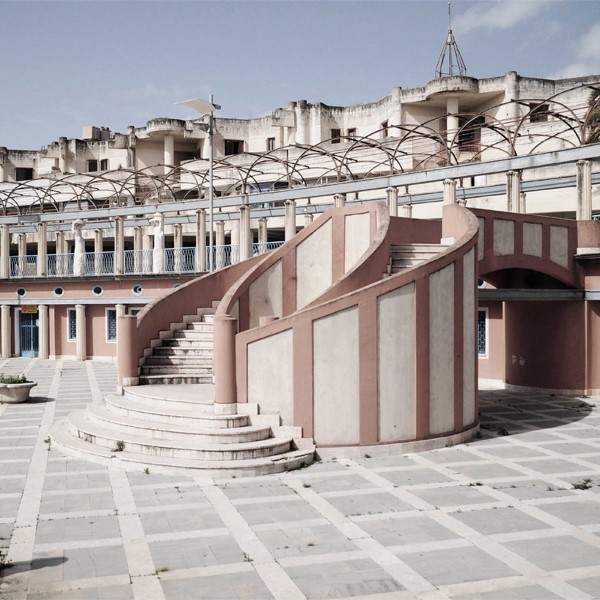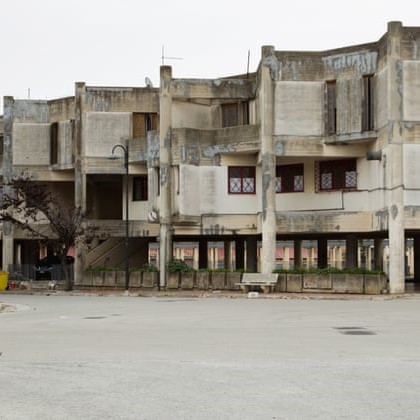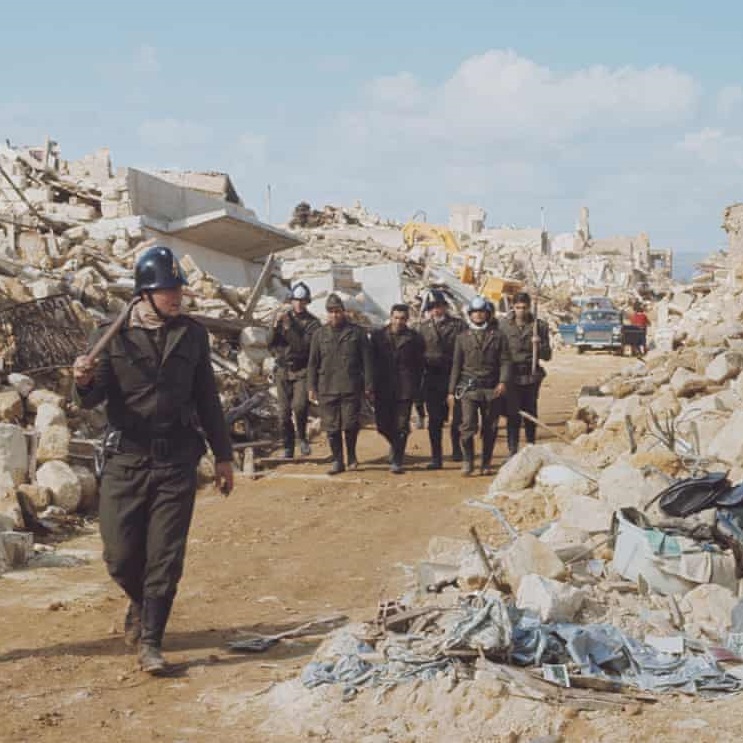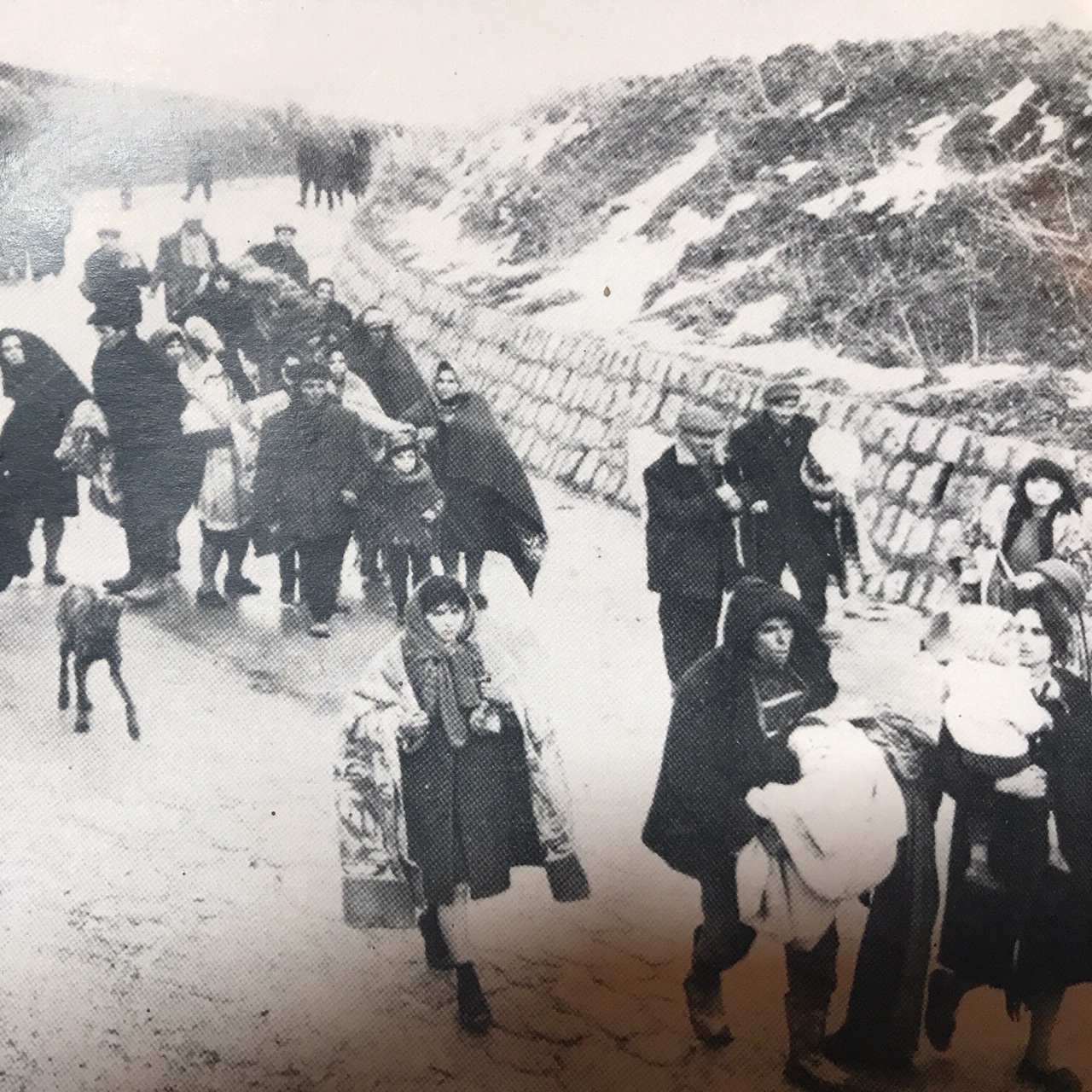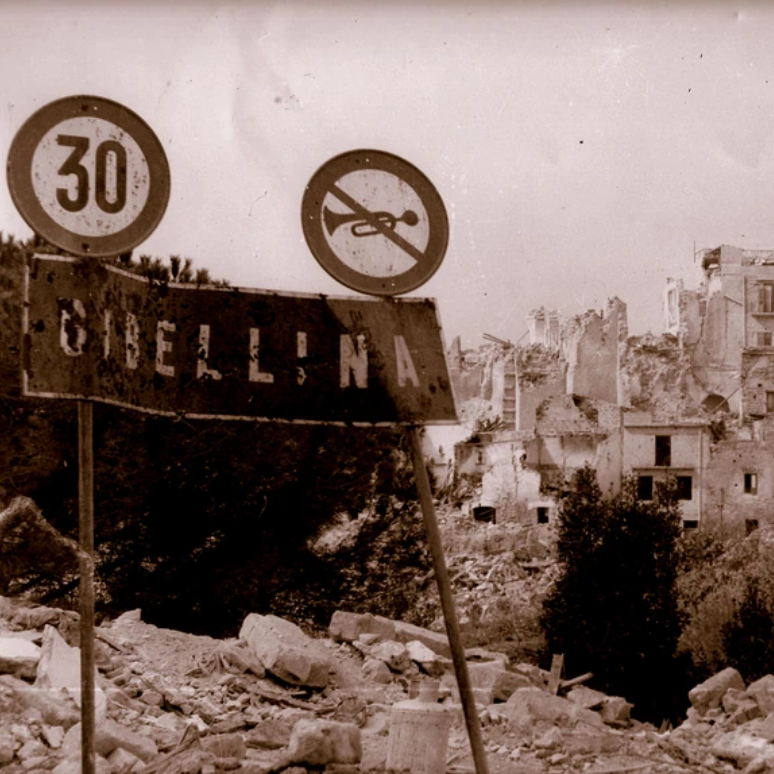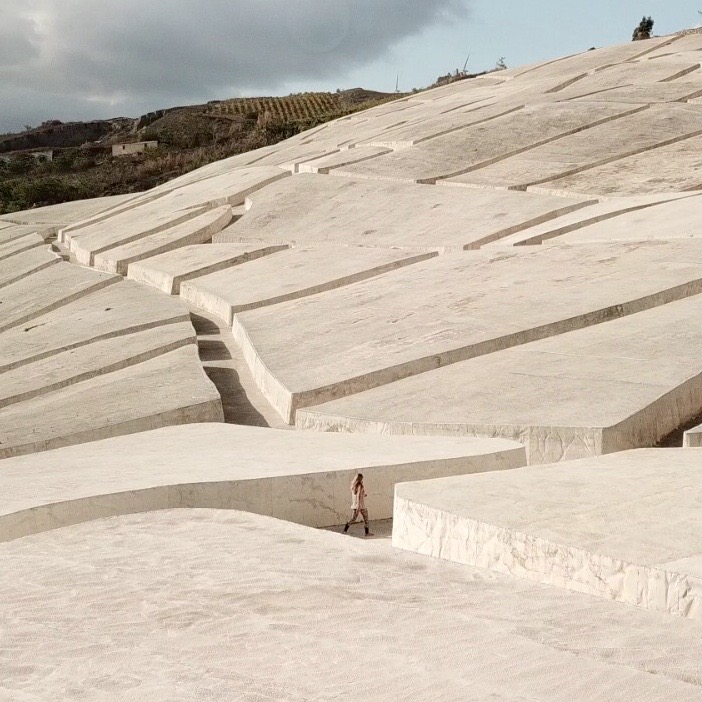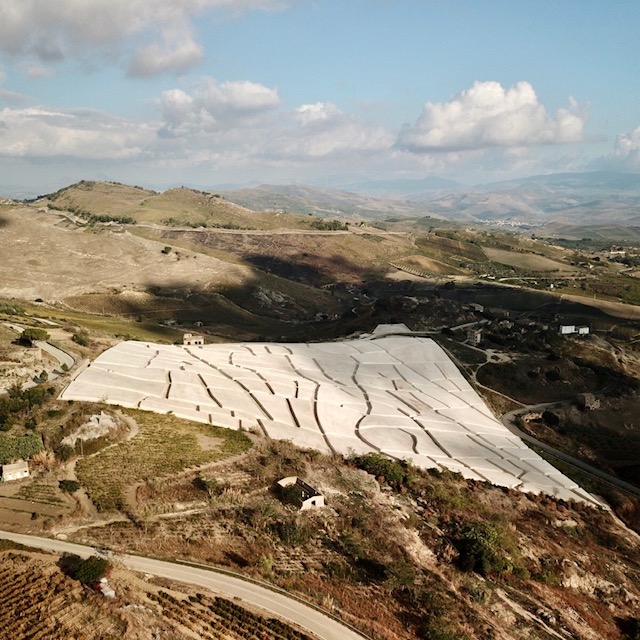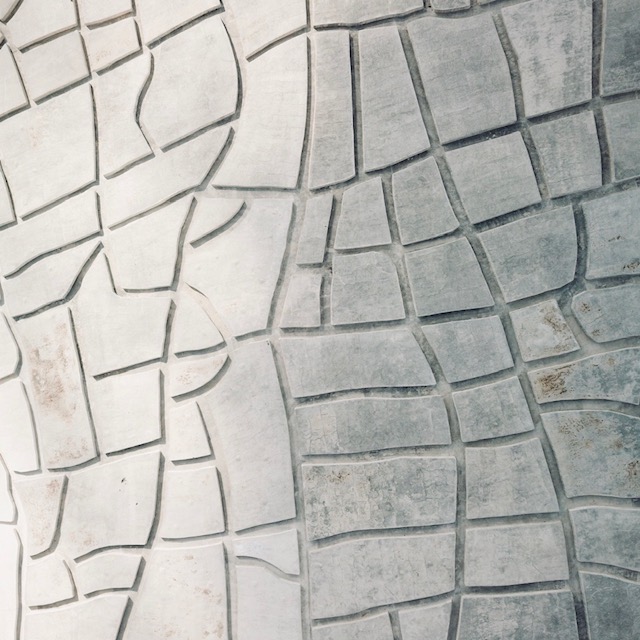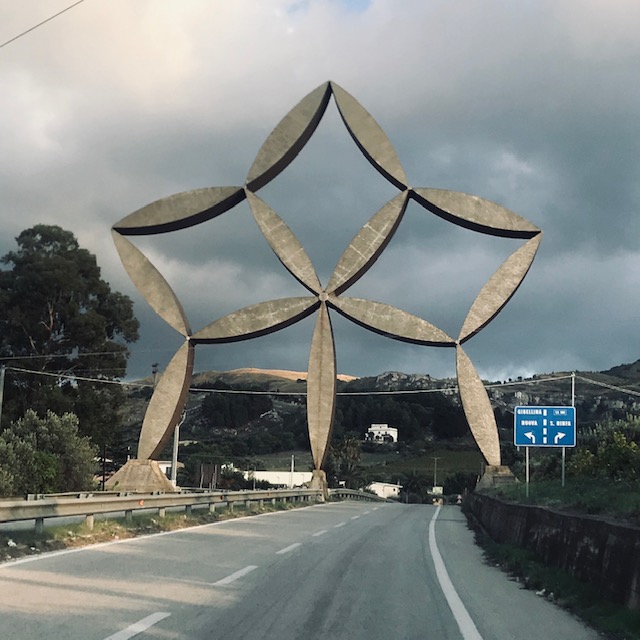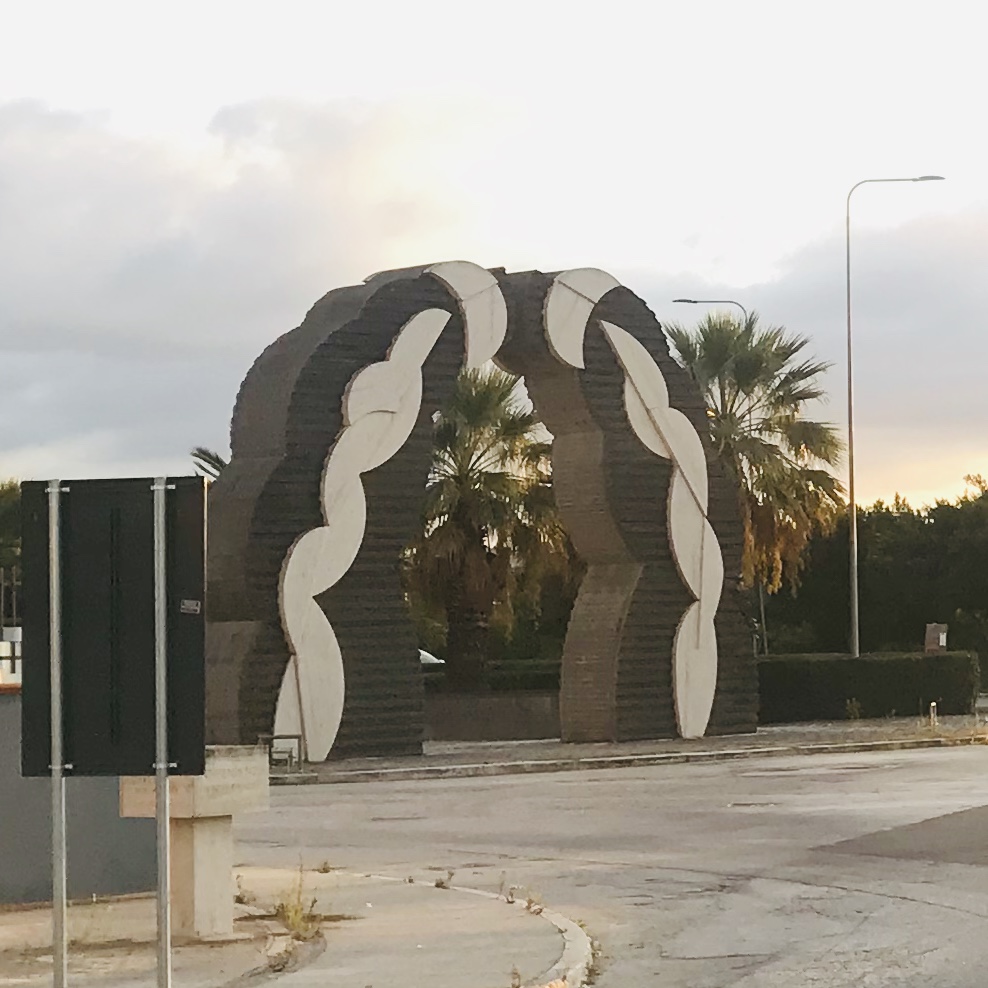POGGIOREALE AND GIBELLINA
POGGIOREALE AND GIBELLINA
In Sicily there are two Poggioreale towns, located only 4 kilometers from each other.
One is quite an ugly town built from scratch in 60/70ties.
The other is a ghost town – abandoned ruins.
Over 50 years ago, in 1968 a powerful earthquake took place here. More than 200 people were killed and the others fled forever, abandoning their homes. Since then, the ghost town is called Ruderi di Poggioreale.

RUDERI DI POGGIOREALE
Ruderi di Poggioreale is a place worth seeing.
It’s best to start the trip in the early afternoon. It takes about an hour to get there by car. The route itself is interesting because when we are on holidays in Sicily, we always stay close to the sea, while in this case we go deeper into the island. It’s a nice opportunity to see the non-touristic area. Big fields of melons, old, sunburned, single farms and deserted, gloomy villages.
The city is accessible only by one street, which is closed by a gate. We leave the car in front of the gate, which we then jump over. There will be probably no one there, sometimes you can meet just a few tourists strolling the streets. It’s rare that the city gate is open, and if it is, it means that a small museum will also be open. All old everyday objects found in crumbling houses and photos of the city’s life before the apocalypse are collected here.
But the most interesting are the buildings themselves. The city is one big open air museum. It was established in 1642, although people have lived in this area since ancient times. All houses are old. It’s better not to enter them, because each is clearly close to collapse. But after a very careful look inside, you can see hand paintings on some walls, you can also guess what particular public buildings were for. Scattered everyday items can be found here and there.
At the same time, there is a charming, hilly landscape around the Belice river valley
We will almost certainly walk around in the company of a dog gang.
No idea why a group of white dogs regularly take on the role of a guide here.
POGGIOREALE NUOVA
After the Poggioreale tragedy, a bold plan was decided – to build a new city from scratch, this time in a futuristic version. What looked modern on paper, in reality turned out to be terrible. Ascetic, concrete buildings with colorful columns and sculptures that were supposed to look like ancient Greek art.
The city lacked squares and alleys for social gatherings. Quasi modernist, harsh style did not appeal to people used to old stone buildings, warm colors and southern coziness. The mayor himself admitted that the inhabitants became victims of an urban experiment.
Over the years, people left the city, and in many cases Sicily. Poggioreale Nuovo was built for 10000 inhabitants. At the beginning of its existence there were 3500, now it’s less than 1500. Most apartments are for sale. 100-meter can be bought for 15.000 euros.
If you are interested in a failed postmodern urban vision, we suggest you skip Poggioreale Nuova and see Gibellina Nuova, described below.
RUDERI DI GIBELLINA
Gibellina is another town that suffered the earthquake in 1968, even more than the old Poggioreale.
The memory of the tragedy was maintained, and in its place came artists who with their works wanted to honor those who suffered. And this is how the amazing Cretto di Burri maze monument by Alberto Burri was created. The artist poured cement in the area of the former city of Gibellina so that the sculpture reflected the grid of streets and houses that stood here in the past.
Hardly anyone gets here, even if they choose to see the old Poggioreale. But it’s worth it, because the construction is huge (12 hectares), and walking along the streets of the labyrinth provides a unique aesthetic experience. And as in the case of the old Poggioreale located next to it, it is quiet, empty, in a sense beautiful, and you can feel the spirit of past events.
GIBELLINA NUOVA
11 kilometers from the monument is the newly built Gibellina, which is (just like the new Poggioreale) a gloomy, unsuccessful urban experiment.
With the difference that for some reason the new Gibellina attracted more of the artists mentioned earlier. While visiting this place it’s best to walk or move by car (it’s not so small) and look for pieces of art. The search for strange works of art in this deserted place resembles mushrooming after rain – they are everywhere. And they give a spooky look to this already surrealistic place.
These are, of course, our subjective feelings, but the most important thing is that the place evokes feelings.
All of them – the Poggioreale ruins, the monument in old Gibellina, and new, crazy versions of these cities.
Each of these places is completely different, but what connects them is silence, emptiness and sad fate of the local community preceded by a common tragedy.
Distance from the spot: 80 km
Driving time: 1 h

